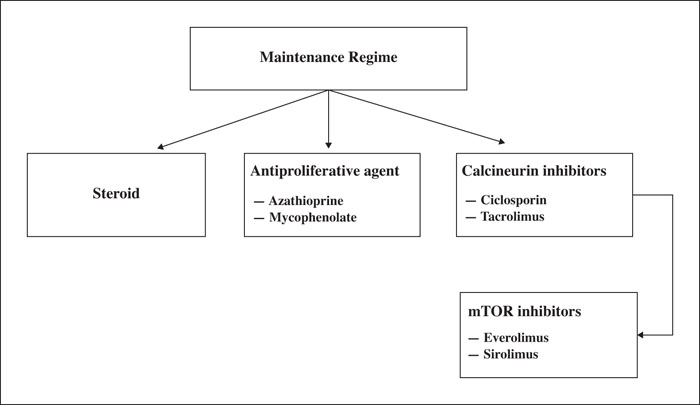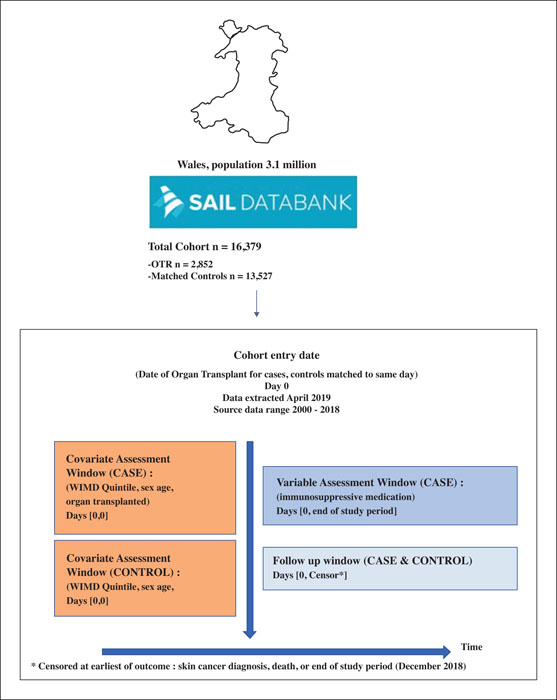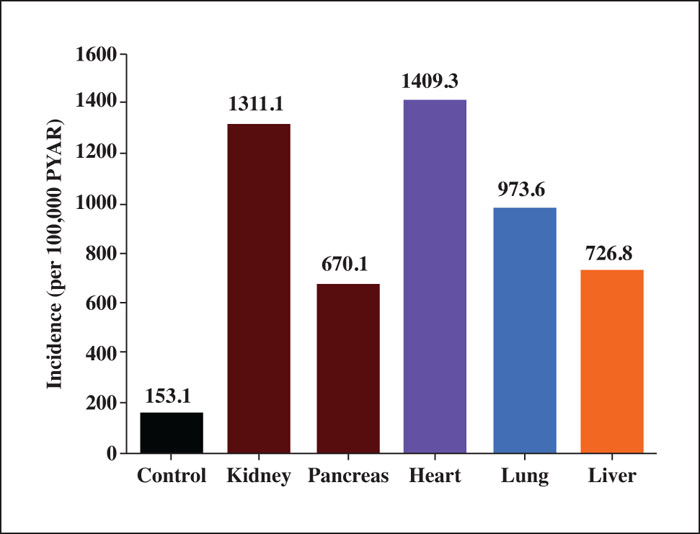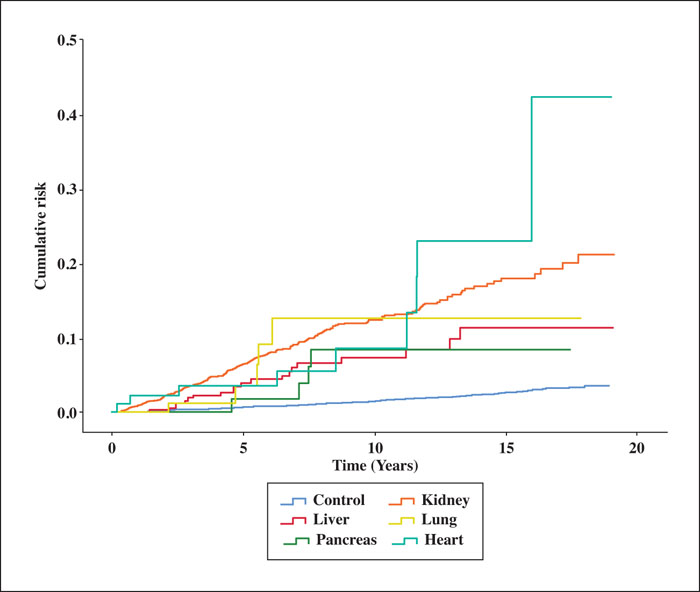European Journal of Dermatology
MENUThe association between immunosuppression and skin cancer in solid organ transplant recipients: a control-matched cohort study of 2,852 patients Volume 31, numéro 6, November-December 2021
Illustrations
Tableaux
- Mots-clés : skin cancer, immunosuppression, transplant, oncology
- DOI : 10.1684/ejd.2021.4108
- Page(s) : 712-21
- Année de parution : 2021
Background
Skin cancer is more common in transplant recipients, although the quoted incidence is variable.
Objectives
This study investigated the incidence of skin cancer in solid organ transplant recipients (OTRs) in a national cohort and the effect of pharmacotherapeutic agents
Materials & Methods
Transplant patients were identified from Patient Episode Database for Wales (PEDW) using Office of Population Census and Surveys Classifications of Interventions and Procedures-4 (OPCS-4) codes. Controls were matched to cases according to age, sex and socioeconomic status. Skin cancer data were obtained from linkage with other national data sources. Incidence was calculated per 100,000 person-years at risk (PYAR). Negative binomial regression was used to calculate adjusted incidence rate ratios (IRRs) for each organ type.
Results
During 2000-2018, 2,852 Welsh patients underwent solid organ transplantation. A total of 13,527 controls were matched from the general population. The incidence of skin cancer within the OTR cohort was 1203.2 per 100,000 PYAR vs 133.9 in the matched control group. Age, male gender and azathioprine use were all associated with an increased risk of skin cancer. Contemporary immunomodulators such as tacrolimus and mycophenolate were associated with a reduction in skin cancer risk when compared to their predecessors, cyclosporin and azathioprine. The highest adjusted IRR was observed in heart transplant recipients (IRR: 10.82; 95% CI: 3.64-32.19) and the lowest in liver transplant recipients (IRR: 2.86; 95% CI: 1.15-7.13).
Conclusion
This study highlights the need for long-term routine skin cancer surveillance for all OTRs and the importance of using contemporary immunomodulators, when possible, for risk reduction.





